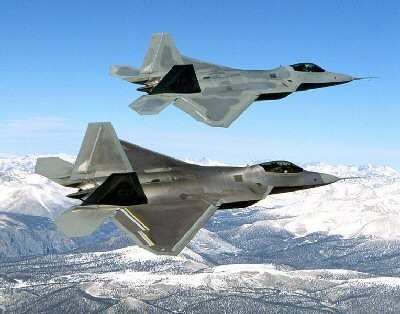Officials Say Damage Could Get Worse If Congress Does Not Act To Avoid Automatic Cuts In FY2104
Air Force leaders announced July 15 that flying training would resume at numerous units, bringing an end to the three-month halt that resulted from the budget sequestration reductions. Congress approved a $1.8 billion reprogramming request that transferred money from several programs to pay for near-term shortfalls in war funding, which allowed flight training to resume.

In total, the budget sequestration triggered by Congress' inability to reach a broader deficit reduction agreement has cost the Air Force $10 billion in fiscal 2013. Absorbing that cut in just seven months forced many damaging steps beyond the halt to flying training, including a near freeze on repairs to buildings, significant reductions in maintenance of aircraft, and the 11 days of civilian furlough that began last week.
The halt to flying reduced expenditures by $857 million for fiscal 2013, but restoring readiness will require major additional investments in 2014 and beyond. "We all understand that the Air Force has a part to play in the efforts to get the federal deficit under control," said Dr. Jamie Morin, the assistant secretary of the Air Force for Financial Management and Comptroller. "The updated defense strategy as well as the drawdown in overseas operations will let us make some reductions. But these arbitrary, across the board cuts from sequestration are undermining the Air Force's efficiency and effectiveness."
Congressional approval of this reprogramming request, coupled with efforts under the "Every Dollar Counts" campaign and belt tightening at bases around the world has allowed the Air Force to begin to undo some of the worst damage from sequestration. However, a recovery of flying proficiency will take several months.

According to Air Force officials, the damage will worsen if Congress does not act to avoid a further round of automatic cuts in time for fiscal 2014, which begins Oct.1. In that case, the Air Force would have to reduce training across an even wider swath of units, including likely more than half the Combat Air Forces. Units across the Air Force are also feeling the effects of the 11 days of civilian furlough, which is reducing crucial services at bases around the world and is projected to cost the average Air Force civilian $3,000 in pay cuts. "We rely on our civilian Airmen to keep the Air Force in the fight," said Acting Secretary of the Air Force Eric Fanning. "Their absence is felt across the board and it impacts our ability to accomplish the mission. General Welsh and I are committed to working with the Secretary of Defense to find a way to bring this disruptive furlough to an early end if at all possible."
While flying operations will begin the long path to recovering readiness, many other areas of Air Force operations remain seriously degraded. The largest funding reductions came in areas like facilities maintenance, where many installations are addressing only emergency work orders. "Right now, most bases only have the resources to do emergency facility and infrastructure repairs in order to avoid imminent mission failure or threats to life, health or safety," said Maj. Josh Connell, who is assigned to Headquarters Air Force Office of the Civil Engineer. "Therefore, vital preventive maintenance is being deferred. Just like with your car, you can save money by not changing the oil, but at some point, it's going to cost a lot more to repair the damage caused by that lack of maintenance."

Similarly, the three Air Logistics Centers' depots have seen their workload reduced by $700 million, meaning that aircraft and engines will not be overhauled on schedule. A broad civilian hiring freeze remains in effect, resulting in thousands of vacant positions across the Air Force. Few of these reductions will be reversed even with approval of the reprogramming action, and the effects are projected to deepen if the sequester reductions last into 2015.
Major Air Force modernization projects were also hit by the sequestration. Some programs were targeted for even further reductions in order to transfer dollars to war requirements, and these cuts will have enduring consequences. "When we have to disrupt complex acquisition efforts to find near-term savings, we almost always end up costing the taxpayer more for less capability in the long run," said Lt. Gen. Charles R. Davis, the military deputy to the Air Force Service Acquisition Executive.
"We appreciate Congress' support for realigning dollars to meet wartime requirements so that we could restore our most critical flying training," Morin said. While the flying stand down was one of the most visible actions we've had to take to reduce spending, no one should be under any illusion that this return to flight means the damage from sequestration has stopped."
 Airbus Racer Helicopter Demonstrator First Flight Part of Clean Sky 2 Initiative
Airbus Racer Helicopter Demonstrator First Flight Part of Clean Sky 2 Initiative Diamond's Electric DA40 Finds Fans at Dübendorf
Diamond's Electric DA40 Finds Fans at Dübendorf ANN's Daily Aero-Term (04.23.24): Line Up And Wait (LUAW)
ANN's Daily Aero-Term (04.23.24): Line Up And Wait (LUAW) NTSB Final Report: Extra Flugzeugbau GMBH EA300/L
NTSB Final Report: Extra Flugzeugbau GMBH EA300/L Classic Aero-TV: 'Never Give Up' - Advice From Two of FedEx's Female Captains
Classic Aero-TV: 'Never Give Up' - Advice From Two of FedEx's Female Captains





